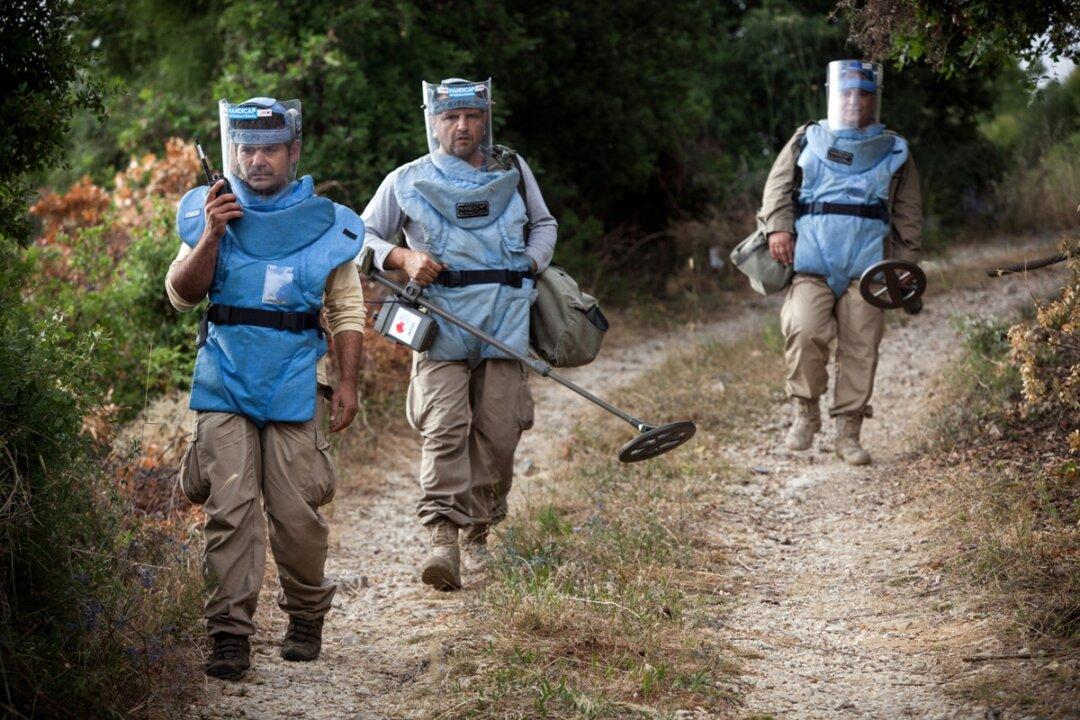They have been called “weapons of mass destruction in slow motion” and have killed or maimed hundreds of thousands over the past century.
Today, landmine accidents claim about 12 lives per day in over 80 countries and territories around the world. There are an estimated 250,000 to 300,000 landmine survivors globally—most of whom are innocent civilians who have lost limbs or suffer permanent disability from their injuries.
Anti-landmine group Handicap International Canada aims to change these grim statistics with its new “Fashion Victim” campaign, which raises awareness of the ongoing use of landmines and cluster bombs and the many innocent victims they leave in their wake.
“Landmines and cluster munitions, a kind of legacy from the past, are a very bad ‘fashion’ that some states are still using,” says Jerome Bobin, communications manager for Handicap International Canada.
“We want as many people as possible to be aware of the fact that landmines and cluster bombs are still a current threat, that thousands of innocents live near minefields, and that some countries still consider these weapons relevant and useful.”
The campaign calls on governments and armed forces to commit to mine-ban treaties, stop all use of landmines and cluster bombs, help to secure and clean mine-contaminated areas, and support affected survivors.
A few countries have been known to use landmines in recent years, but the millions of mines left behind from wars past—as early as World War I— find the most new victims.
Cluster bombs—an explosive weapon that releases dozens of small “bomblets” over a wide area when detonated—claim fewer lives than land mines (about 150-200 deaths per year) but have been used in more recent conflicts. They are especially deadly for children, who often mistake the brightly coloured bomblets for toys.
Syria was widely condemned for using cluster munitions and land mines in mid-2012 to 2013, causing numerous civilian casualties. Myanmar government forces, Sudan, Libya, Israel and Thailand have also been accused of using the weapons in the past two years.
The 2013 Cluster Munition Coalition report alleges the U.S. last used cluster bombs in a December 2009 strike in Yemen, which killed 41 civilians. The U.S. has refused to confirm or deny the attack.
Since the end of World War II at least 20 government armed forces have used cluster munitions during conflicts in 36 countries and four disputed territories, according to the report.
Canada-led Landmine Treaty
The use of landmines has dropped significantly in the past decade thanks to the International Campaign to Ban Landmines (ICBL), a global network of NGOs including Handicap International that advocates for a world free of landmines.
ICBL was instrumental in campaigning for the 1997 Mine Ban Treaty, a groundbreaking Ottawa-led convention to eliminate the use, stockpiling, production and transfer of anti-personnel mines (the type of landmine designed for use against humans).
To date there are 161 States Parties to the treaty, but 36 countries have not yet signed on, including the United States, Russia, China, Myanmar, United Arab Emirates, Cuba, Egypt, India, Israel, and Iran.
Bobin urges these countries to commit to the Ottawa treaty as well as to the Convention on Cluster Munitions, an Oslo treaty that prohibits the use, transfer, and stockpiling of cluster bombs.
Canada has signed the Oslo treaty but has yet to ratify it. Until ratification Canada has not truly committed because it does not have the obligation to help victims and de-mine countries, notes Bobin.
He hopes the Fashion Victims campaign will lead to Canadians putting pressure on Ottawa to take the final step.
“We have to inform and raise the awareness of [Canadians] because it’s not a subject that is very local. In fact, it’s not a threat that is local,” he says.
Some anti-landmine groups have criticized the Conservative government for reducing funding for de-mining efforts in recent years. Last year Ottawa awarded about $17 million to demining-related efforts, down from $33 million in 2011 and a high of $49.2 million in 2007.
Bobin says his organization has not seen a decrease in funding, but hopes the government can reinforce its commitment by continuing support for victim assistance and ratifying international anti-mine treaties.
Pyramid of Shoes
At the end of September, Montreal will join several European cities to participate in the annual “Pyramid of Shoes.” The event asks citizens to donate shoes which are thrown into a pile to form a pyramid that symbolizes rejection of landmine use and support for victims.
“Anyone can come and symbolize their rejection of landmines, and of the disabilities that they cause, by throwing shoes,” says Bobin. “Because most of the time, when you walk on a landmine you lose one leg.”
The event also features de-mining demonstrations and talks by physiotherapists about the process and rehabilitation involved in an amputation. The public can also try on prosthetics to better understand how it feels to navigate life with an artificial limb.




